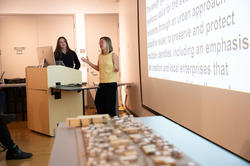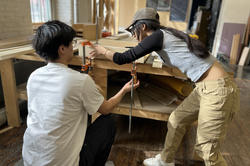Students reimagine Providence’s Broad Street corridor as a network of hubs fostering community, employment opportunities, safety and affordable housing.
RISD Interior Architecture Students Envision New Life for Landmark Frank Lloyd Wright Building

In the 1930s, a public debate between architecture giants Le Corbusier and Frank Lloyd Wright inspired Wright to design a 19-story apartment building for New York City with a trunk-like tower and concrete floors cantilevered like the branches of a tree. Although the project never came to fruition, Wright sold midwestern oil and gas magnate Harold Price on the design some 20 years later and erected the “tree that escaped the crowded forest” in 1956 in Bartlesville, OK.
Featuring cast concrete walls, pigmented concrete floors and aluminum-trimmed windows and doors, the Price Tower has since served as headquarters for Phillips Petroleum, a mixed-use residential space, an arts center and sculpture garden, and a one-of-a-kind hotel with a rooftop bar cherished by local residents. In 2007 it became a National Historic Landmark and, after falling into disrepair, was recently sold at auction for only $1.4 million.
Now, graduate Interior Architecture students Mariacecilia Rodriguez MA 25 IA and Nyree Vertanessian MA 25 IA are reimagining the building as a creative epicenter for independent filmmakers that would breathe new life into Bartlesville’s depressed downtown. “It’s our responsibility to take care of historically important buildings like the Price Tower,” Vertanessian says. “It’s a beautiful building with copper exterior details that was entirely furnished by Frank Lloyd Wright using his wallpapers, draperies and fabrics,” Rodriguez adds, “although much of the original furnishings have been stolen.”
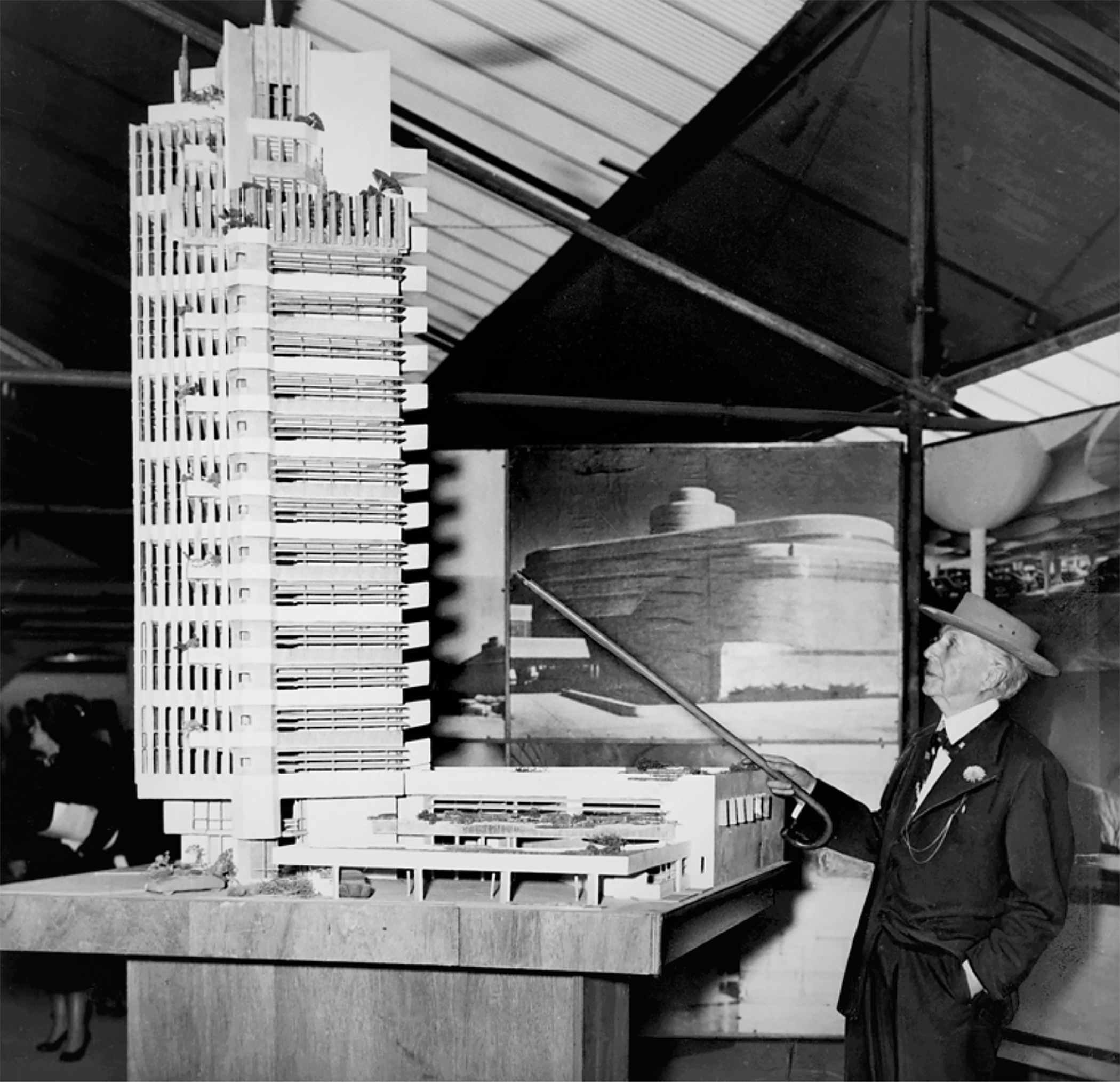
The project is part of an adaptive reuse studio called Afterlives of an Architectural Icon taught by Interior Architecture Professor Liliane Wong, the final studio in a year-long sequence of courses focused on the practice, principles and theories of adaptive reuse. The spring studio gives emerging designers the opportunity to put the theories they’ve studied into practice as they learn how to preserve existing structures rather than demolishing them and rebuilding from scratch.
“In the US, there are more than 2,600 National Historic Landmarks preserved as part of American history and culture,” Wong notes. “The students considered the complex issues posed by both the structure itself and the personage of its architect, with the view of understanding how these two factors will affect the direction of the new use of the building.”
Among the special circumstances architects face when redesigning heritage structures are unique regulations, the need for reversible interventions and a deep understanding of the building’s significance both inside and outside the architectural community.
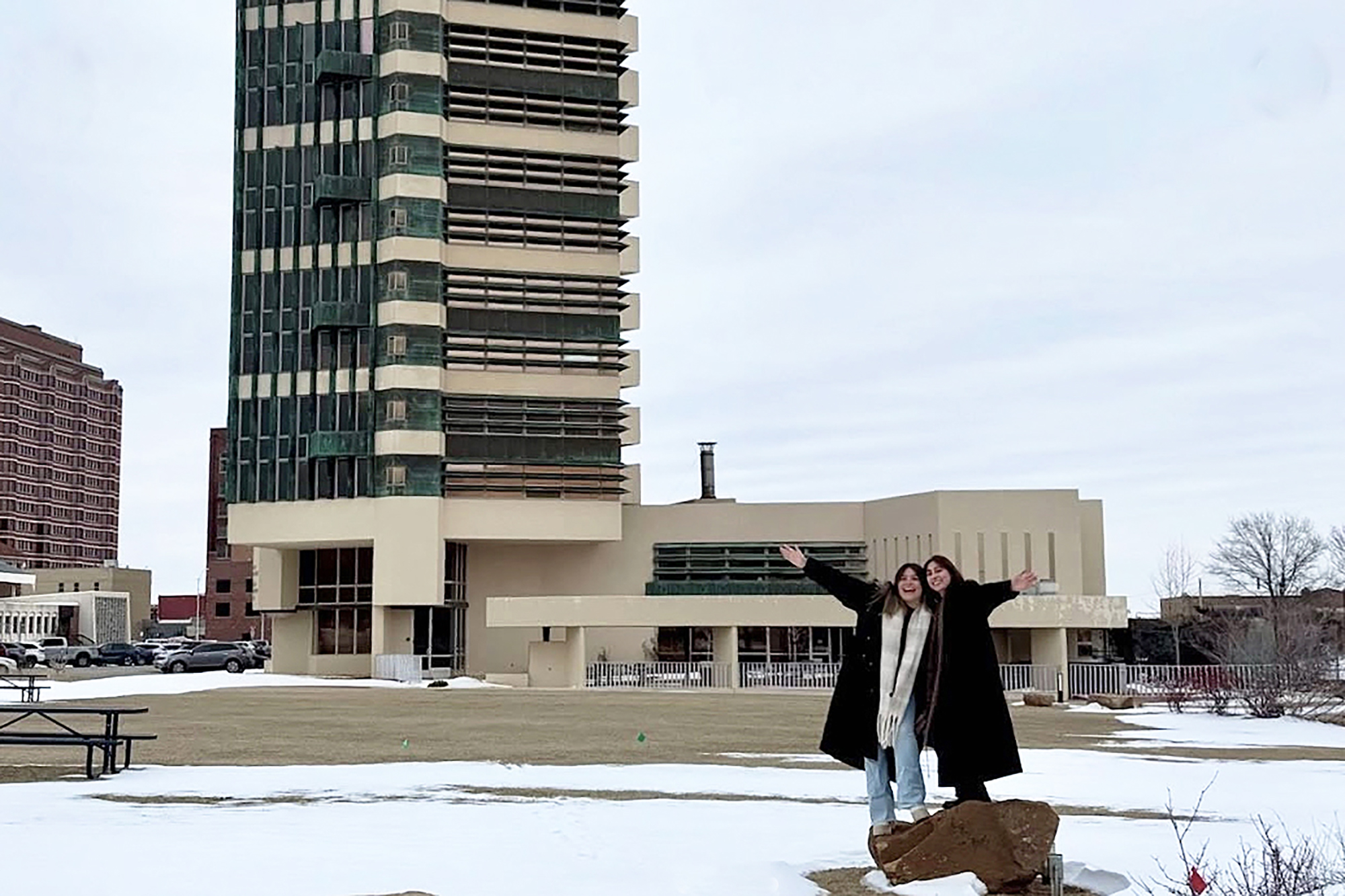
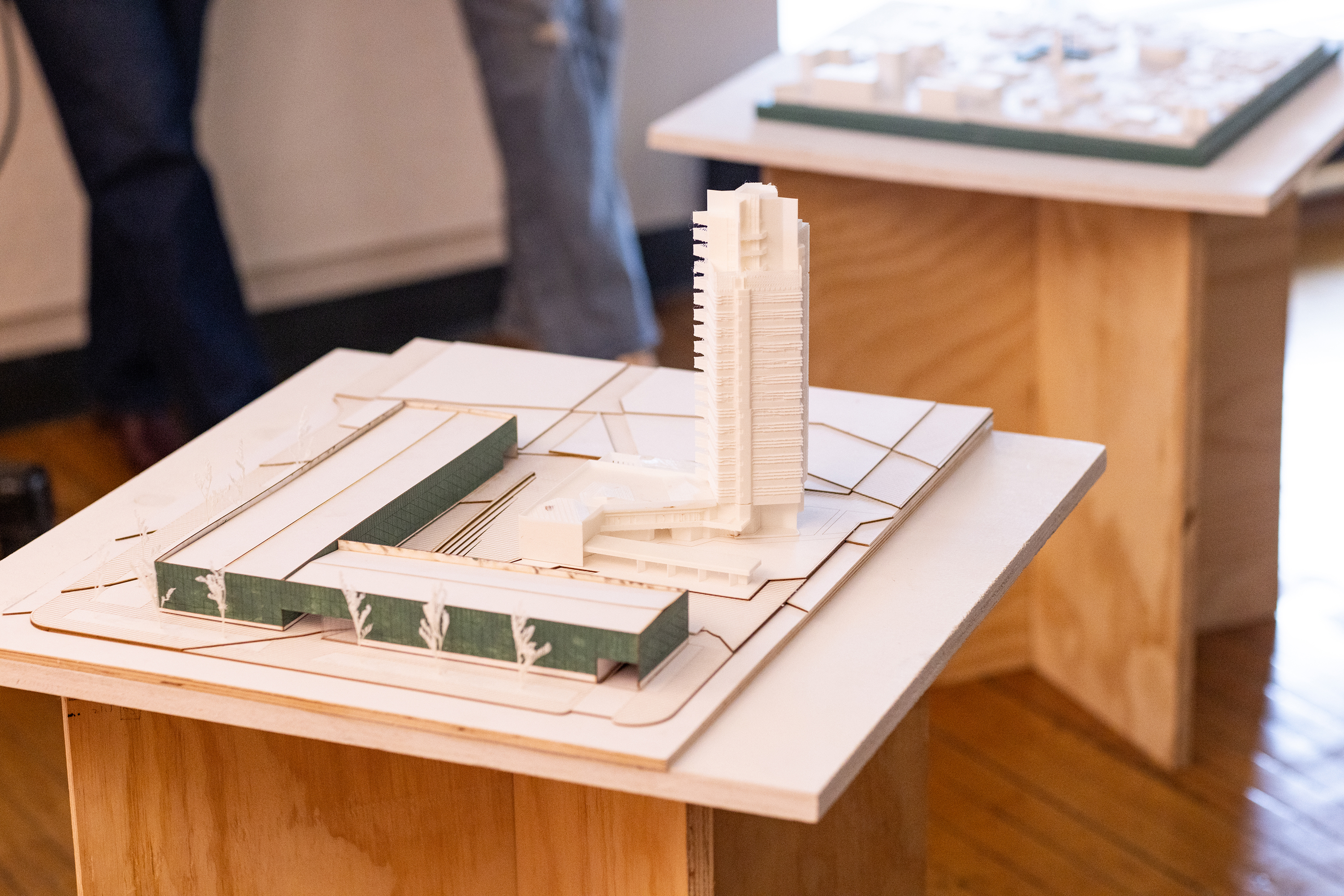
Rodriguez and Vertanessian traveled to Bartlesville as part of their research, where they saw for themselves the state of the tower, gained access to the city’s 2045 master plan and also learned about the recently launched Buffalo Roam Studios, producers of the award-winning 2023 film Killers of the Flower Moon. “Bartlesville is adjacent to the Osage Nation, which makes it a great location for filming westerns,” they explain. “Our design proposal centers around adding a new film studio and using the residential spaces as rentals for actors and film crew.”
In late May, they presented their project to a team of critics including Providence Preservation Society Executive Director Marisa Brown. She noted that cities across the country are dealing with similar issues maintaining historical properties. “The key is creating financial opportunities that benefit the community,” she explained.
The proposed intervention, titled Take Two, attempts to address Brown’s concerns as well as fire safety and accessibility issues they encountered at the site. It includes reopening a drive-through feature at the base of the tower, adding two sets of exterior elevators and creating an aesthetically appropriate addition that would house the new film studio.
Visiting critic Eric Anderson, a professor in RISD’s Liberal Arts division, appreciates the consistent, respectful design motif they incorporated into the proposed additions, which Vertanessian described as a “reinterpretation of Wright’s design. Our intent,” she added, “was to echo but not mimic the original concept.”
Simone Solondz / photos by Jo Sittenfeld MFA 08 PH
May 30, 2025
